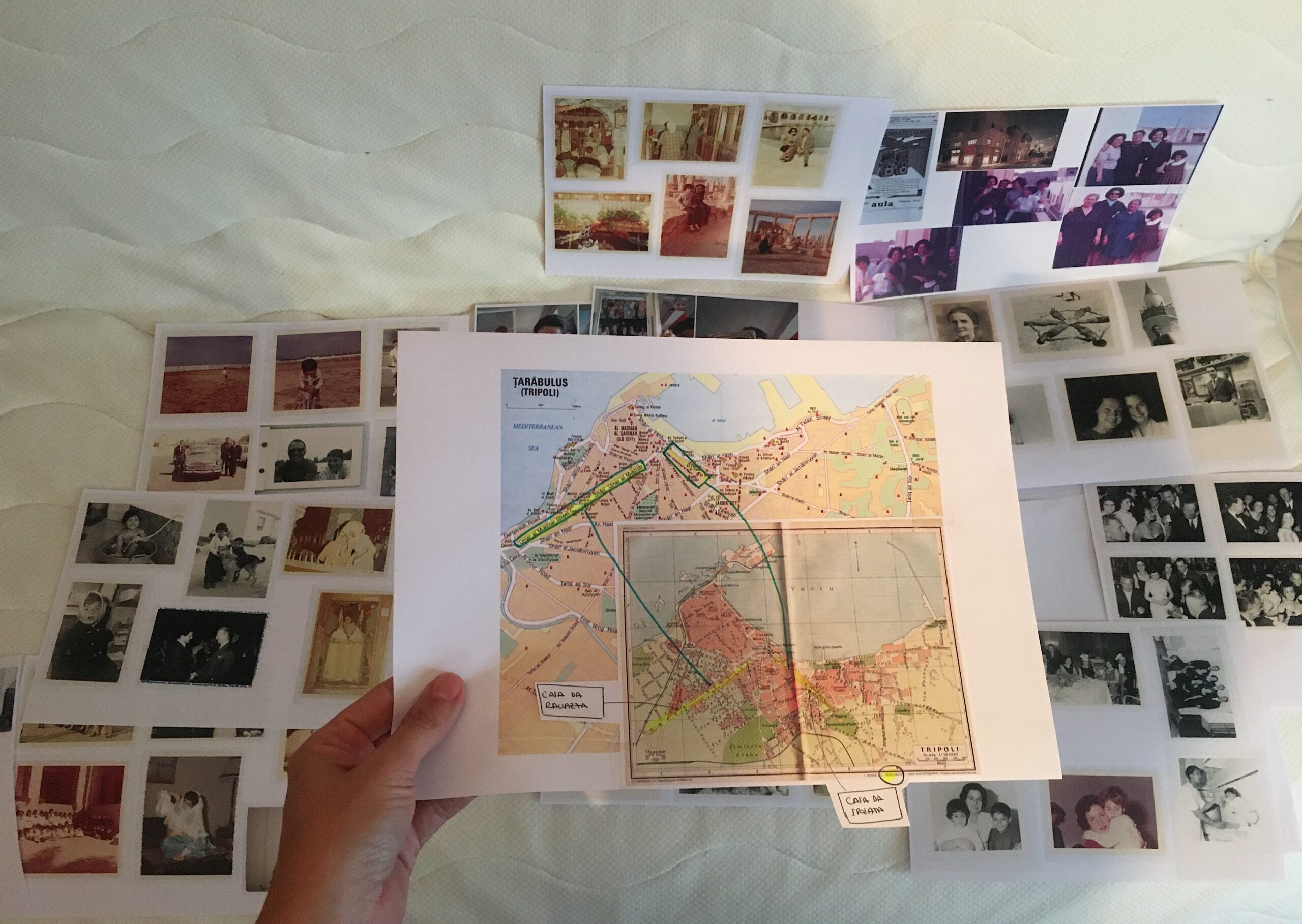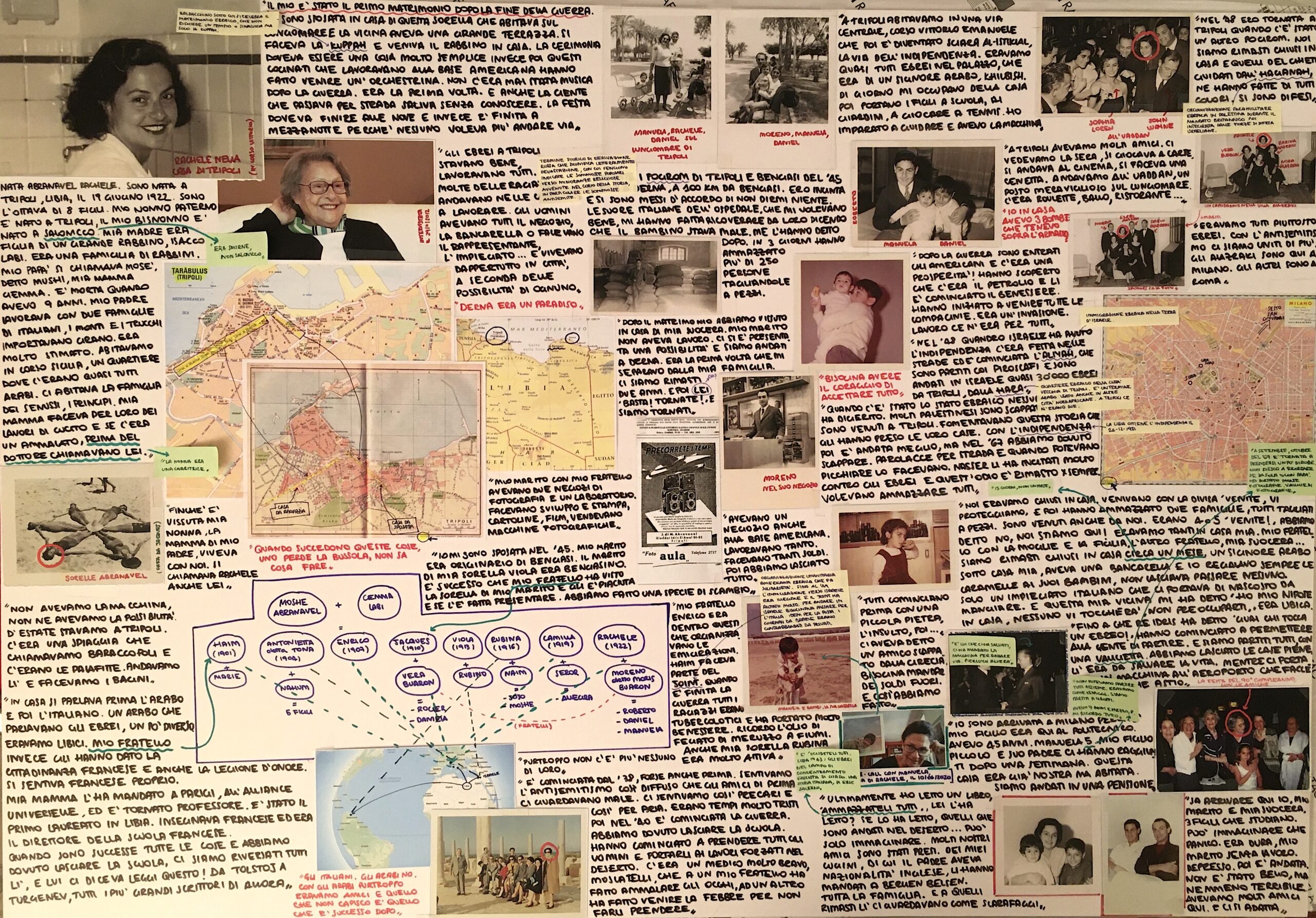With the kindly collaboration of Rachele’s daughter Manuela Buaron and the CDEC Foundation (Milan)
The genesis and development of the next two creative maps is explored in the contribution Mapping memories, charting empathy: framing acollaborative research-creation project, by Martina Melilli and Piera Rossetto in From the European South 8 (2021).
The storyboard marks the beginning of the professional collaboration between Melilli and Rossetto in the framework of the project Europe’s (In)Visible Jewish Migrants. It displays Melilli’s exploration of the lifestory of Rachele Abravanel, who was forced to leave Tripoli in 1967 with her family and settled in Milan (Italy).
Rachele was one the about 6,000 Jews who remained in Libya after the mass migration of the majority of the country’s Jewish population between 1948 and 1952. Contrary to Rina Messika Guetta (whose story is creatively interpreted in the map above), Rachele did not leave Tripoli until the situation in the country became unbearable.
Rachele’s story is not particularly exceptional. Indeed, under many respects it is an “ordinary story.” However, beneath the “ordinary recollections” of a life spent within the family she was born in and the family she created as a young woman, run the roots and routes of an intense and long life trajectory. Through the prism of her life, we are invited to observe, from the microperspective of the individual destiny, many global events: the collapse of the Ottoman Empire and the migration of many Sephardi Jews from the Eastern shores of the Mediterranean towards the West; the Italian colonisation of Libya; the Second World War and the anti-Jewish legislation; the establishement of the State of Israel and the mass migration of Libyan Jews which followed; the procalmation of the independent Kingdom of Libya and the economic boom brought about by the discovery and exploitation of oil in Libya, just to mention some.

Work in Progress, by Martina Melilli, Rovereto (Italy) 13/07/2020

Storyboard Rachele Abravanel, by Martina Melilli
(Forex® (PVC) 100×70 cm)
While the Storyboard is configurated as a form of visualization that embraces Rachele’s life with as much content as possible, giving to her memories as much space as possible, the second creative map Mindili (my handkerchief) looks radically different with just few visual elements. However, it is precisely the “scarcity” of elements that point to Melilli aim: designing her vision “of Rachele’s map, her hypothetical treasure map depicting the most precious things in her memories. A map I imagine she would have kept in a handkerchief, one she always kept in her pocket or tied around her neck orhair. Both for protection and to ensure she could always find the right road” (Melilli and Rossetto 2021).